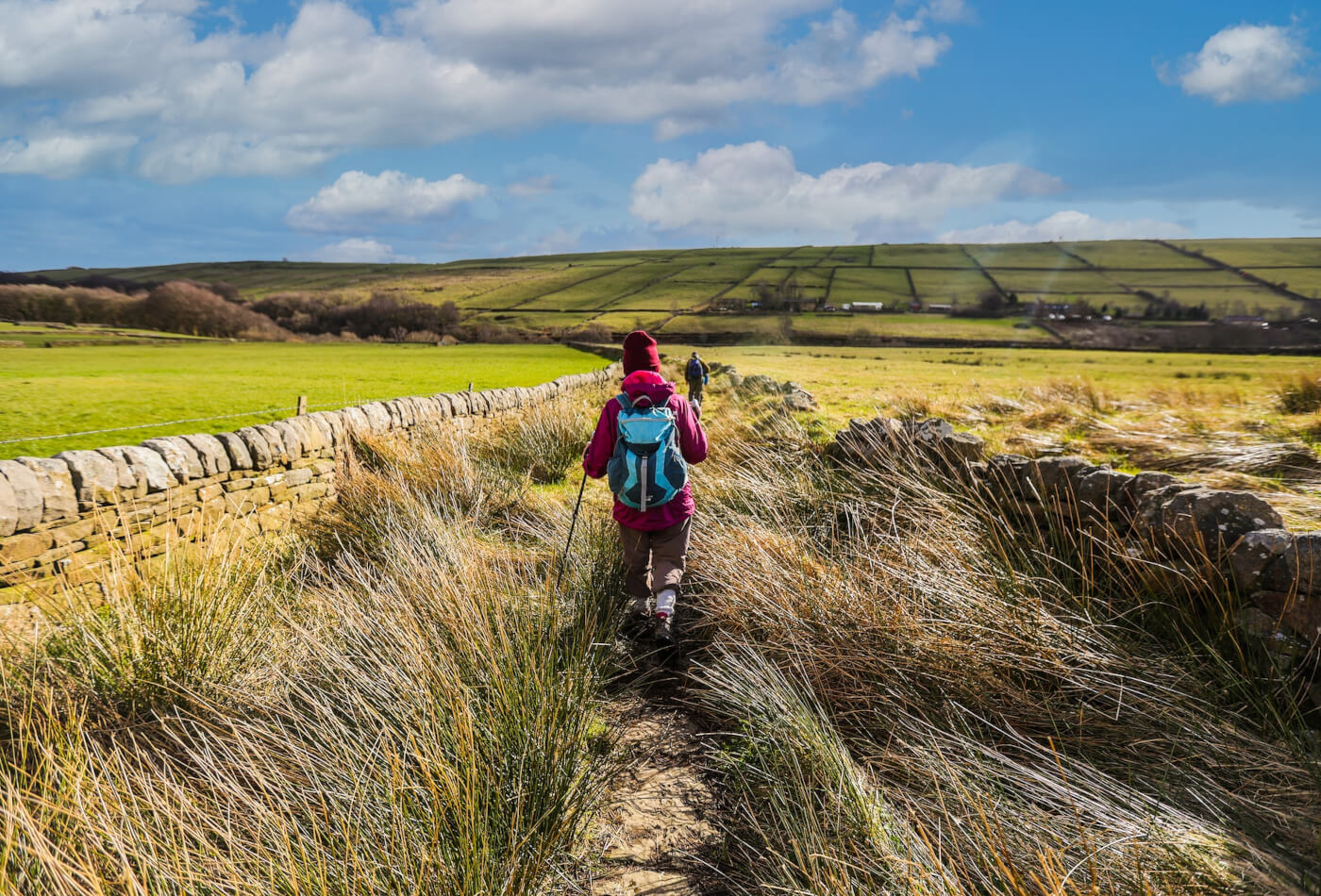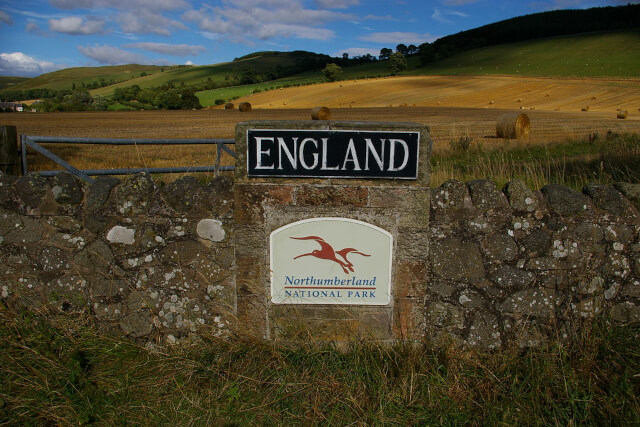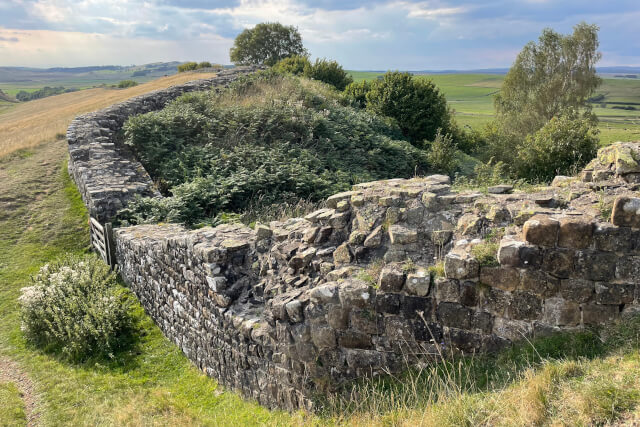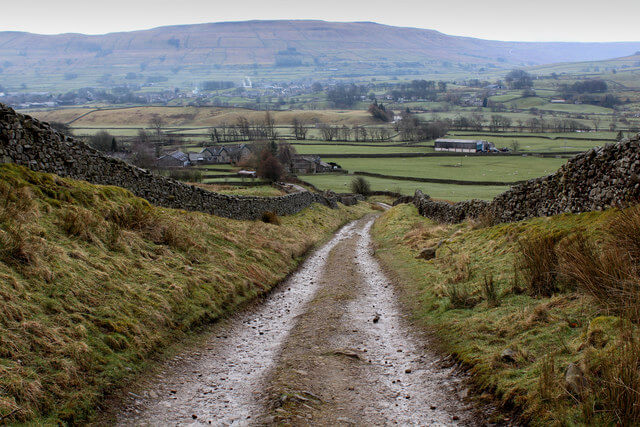Things To Do on Holy Island
A pint-sized tidal island sitting off the coast of Northumberland, there’s a wonderful collection of things to do on...

One of the least-visited of it’s kind, Northumberland National Park is a hidden jewel in the crown of northern England.
Covering more than 400 square miles of sprawling moorlands in the heart of England’s northernmost county, the park is a realm of untamed landscapes.
Whether you’re an experienced hiker looking for a challenge or a family looking for adventure, you’ll find it here.
In this comprehensive guide, we invite you to uncover the untouched beauty of the Northumberland National Park. Keep reading to find out more…
Northumberland National Park is a large area of protected rural countryside located in the county of Northumberland.
The northernmost national park in England, it’s one of the countries least-visited.
Home to some of the cleanest rivers, clearest airs and darkest skies in England, its clear to see why the park was named National Park of the Year in 2018.
Northumberland National Park is approximately 1,050 square kilometres in size, converting to about 405 square miles.
To put things into perspective, that’s half the size of Snowdonia National Park and three times the size of The Broads, England’s smallest National Park.
This map of Northumberland National Park details the sheer size of this rural haven.
The population is as little as 2,000 people, which works out to be just two people per square kilometre.
Although the park doesn’t completely encompass Northumberland, it occupies a significant chunk of it. The entire county of Northumberland covers an area of 5,013 square kilometres in total.
The boundaries and area of the park may change over time as a result of conservation efforts and administrative actions.
Northumberland National Park sits entirely within the county of Northumberland in northern England.
The park covers a large area, stretching between the Scottish Borders and the southern edge of Hadrian’s Wall. The park is bordered by the county of Cumbria on one side and Northumberland on the other.
The park was officially designated national park status in April 1956. This accolade provided the area with the highest level of landscape protection in the UK.
The park was established in order to conserve and protect the natural landscape, wildlife, cultural heritage and historical sites within it.

In the early stages of development, there were discussions regarding which parts of Northumberland should be included within the boundaries of its national park.
The decision to exclude the coast of Northumberland along with Kielder Forest was made due to difference in purpose related to land use, conservation, and local interests.
These two locations have since been designated as an Area of Outstanding Natural Beauty (AONB) and the Border Forest Park, respectively.
The Northumberland National Park Authority owns a small portion of land within the national park.
Only 2.5sq km of land is under control of the NNPA. The remainder of the land is split between private owners, the Forestry Commission, and the Ministry of Defence.
The Otterburn Army Training Estate covers an area of 242 square kilometres of the park.
The landscape of the park is diverse, decorated in a blend of moorland, woodland and heathland, all interwined with rivers, valleys and hills.
The park plays host to a wonderful array of wildlife, including red squirrels, otters, deer and bird species.

A network of well-maintained trails and footpaths wind their way through the landscape, showcaing the park’s tranquility.
You’ll find ample opportunity for recreational activities, including walking, hiking, cycling and birdwatching. There’s even watersports!
The park is steeped in history and culture, with ancient castles, ruins and archaeologial landmarks dotted throughout the landscape. Discover the ruins of Hadrian’s Wall, Harbottle Castle and Tosson Tower, each with their own facinating story to tell.
The Cheviot Hills dominate much of the park’s skyline, straddling the Anglo-Scottish border between Scotland and England.
The English section of these uplands sits within the national park in Northumberland. This range includes The Cheviot, Hedgehope Hill, Windy Gyle, Cushat Law and Bloodybush Edge.
Built by Emperor Hadrian in the second century, this Roman frontier wall runs from Wallsend in the east to Bowness-on-Solway in the west, passing across the national park’s northern boundary.
An iconic UNESCO World Heritage Site, Hadrian’s Wall extends a staggering 73 miles from coast to coast.
Northumberland hosts the longest stretch of the wall, with 10 miles sitting within the boundaries of the national park. Some of the best-preserved sections of the wall can be found here, surrounded by some of England’s finest landscapes.

The Hadrian’s Wall Path National Trail attracts over 10,000 visitors each year. Walkers and hikers can fully immerse themselves in the rural and historical delights of the national park walking along this section of the wall.
Over 10,000 people visit the Hadrian’s Wall Path National Trail each year. Following this portion of the wall allows hikers and walkers to fully immerse themselves in the agricultural and historical wonders of the national park.
The Northumberland National Park hosts a plethora of walking trails, showcasing the park’s natural beauty along the way.

The Hadrian’s Wall Path National Trail is the most popular walk in the national park, following alongside Hadrian’s Wall. The trail is typically completed in sections, with some outdoor enthusiasts walking the park’s 10-mile route in one day.
The Cheviot Hills provide a more challenging ascent, rewarding climbers with awe-inspiring views across the park from it’s summits. If you’re feeling adventurous we’d recommend climbing The Cheviot, the highest peak in Northumberland.
For a more leisurely walk, there’s Breamish Valley, Hareshaw Linn and Thrunton Woods. Enjoy the tranquility and disconnect that the national park offers along these magical trails.
Tempted to a rural adventure in Northumberland? Pack your hiking boots and join us at one of these cottages in Northumberland National Park.
For more inspiration on how to spend your time, give our guide on things to do in Northumberland a read!
Images courtesy of: Eddie Robertson – (CC BY-SA 2.0); Andrew Curtis – (CC BY-SA 2.0); Chris Heaton – (CC BY-SA 2.0); Carole Raddato – (CC BY-NC-SA 4.0)